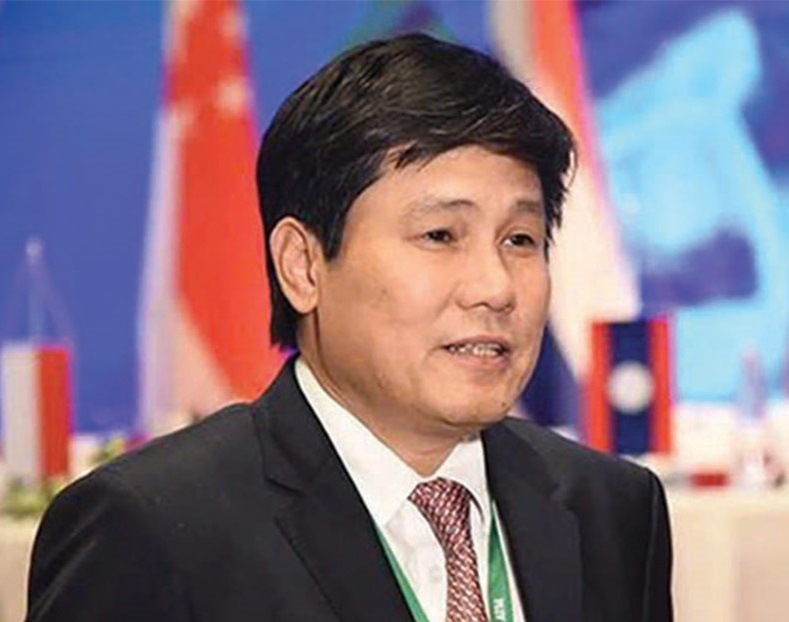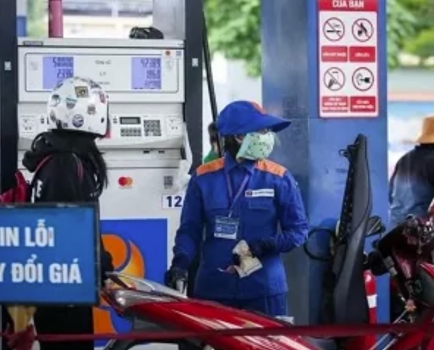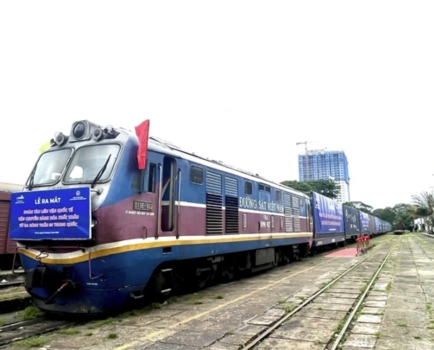Efficiencies improved through digital transformation
Fri, 27 Dec 2024 11:00:00 | Print | Email Share:
Digital transformation in the aviation sector has made some notable achievements. In state management, the sector forms and effectively implements e-government 2.0, focusing on ensuring no face-to-face meetings or admin processes, paperless interconnected documents, and cashless payments.
The Civil Aviation Authority of Vietnam (CAAV) has also been implementing biometric authentication and the application of population data and electronic ID for passengers when checking in for flights.
| Dinh Viet Thang, director Civil Aviation Authority of Vietnam |
The greatest effect that digital transformation brings is optimising the operations of the entire industry, ensuring security and safety, reducing costs, and increasing profits for aviation businesses. It being strongly implemented throughout the industry, and in addition to state management, such a transformation also helps improve the operational efficiency of specific businesses.
Pioneers in the journey include the national flag carrier Vietnam Airlines, Airports Corporations of Vietnam (ACV), Vietnam Air Traffic Management Corporation (VATM), and others.
In this area, Vietnam Airlines issued a transformation strategy for the 2022-2026 period, building the airline’s culture with the goal of becoming a digital airline.
Paying attention to being customer-centric, the carrier aims to deliver relevant content based on an understanding of customers and partners. For example, digital identity management helps deliver a seamless and contactless customer experience.
It provides customers with tools and control over their personal data as desired, or digital payment options, which helps bring an easy experience in the whole journey. Air carriers in Vietnam have been focusing on investing in such a transformation to provide a service system on multiple devices, such as airport check-in kiosks, in the most convenient way for passengers.
Harnessing the value of technology and data to transform operations towards agility and sustainability, airlines have the ambition to become data-driven organisations to increase operational efficiency, and this includes flight operations, ground operations, planning, and monitoring of cross-departmental execution.
Data is also an input source for automating processes, developing predictive tools, sourcing data from other airlines and partners in the value chain, and implementing cost optimisation programmes.
The airline also deploys its Airline Management System, a comprehensive software suite that helps it manage fleets and personnel, and track financial performance. It also helps to track and analyse customer data, manage ticket sales and fare structures, and provide customer service.
Vietnam Airlines also deploys flight management, reservation, navigation, and flight planning systems.
Similarly, the air traffic management industry is a field with deep international integration. Systems are often interconnected among countries to exchange data related to air traffic operations. VATM closely follows the policies of the International Civil Aviation Organization, the organisation of air traffic managers to promptly have decisions and solutions suitable to the actual situation, meeting cooperation requirements.
VATM has also been cooperating with large consulting organisations such as Mitre, Boeing, and Japan International Cooperation Agency to develop air traffic management plans and build flight methods to meet the needs of digital transformation.
To implement tasks related to this, VATM issued a framework plan in production management and administration for the rest of this decade. In that, it has deployed solutions to develop infrastructure for the transition of the flight management technology platform from old-generation analogue technology. It has also approved an aviation telecommunications network with the goal of building unified IT infrastructure for the flight operations assurance systems of the entire corporation.
VATM is also in the process of implementing a project on digitalisation and development of storage management software, integrating technology to manage documents and files in digital format. This system will be connected to the electronic office system to unify data.
In addition, it is also building programmes and plans to share, connect, and integrate data with relevant parties as well as internationally.
For ACV, since 2023, it has deployed automatic immigration control gates at various airports to help passengers conveniently complete procedures, shortening wait times compared to manual inspection. This is the first time this technology has been deployed on a large scale at major airports in Vietnam. The entire process takes less than one minute, creating a smooth flow at the control gates.
ACV also deployed at several airports a bilingual self-check-in kiosk system for passengers on international flights.
The Vietnamese civil aviation industry has a real opportunity. Institutions, regulations, processes, and operations all strongly optimised in accordance with international standards is the basic foundation for the application of digital tools to be deployed effectively.
However, there needs to be a drastic change in thinking and awareness throughout the industry about digital transformation. The biggest challenge for Vietnam’s aviation when implementing this is to change ourselves.
Digital transformation associated with environmental protection, climate change response, and sustainable development is a massive challenge for the industry, as we participate in the carbon reduction and offset plan for international flights in the civil aviation sector, and the goal of net-zero emissions by 2050.
To create breakthroughs in policies for this issue in aviation, as well as increase the application of technology in the next development phase, the authority recognises the need for a number of specific solutions.
It is necessary to amend and supplement the content on state management in Article 8 of the Law on Civil Aviation, according to the principle of supplementing responsibility for this area in civil aviation for the Ministry of Transport to promptly issue and implement legal instructions.
Also required is to maintain a specific financial mechanism for the CAAV to attract high-quality personnel to effectively serve the digital transformation task in the next phase.
By: Dinh Viet Thang/ Vietnam Investment Review
Source: https://vir.com.vn/efficiencies-improved-through-digital-transformation-120374.html
---------------------------------------------
Same category News :














